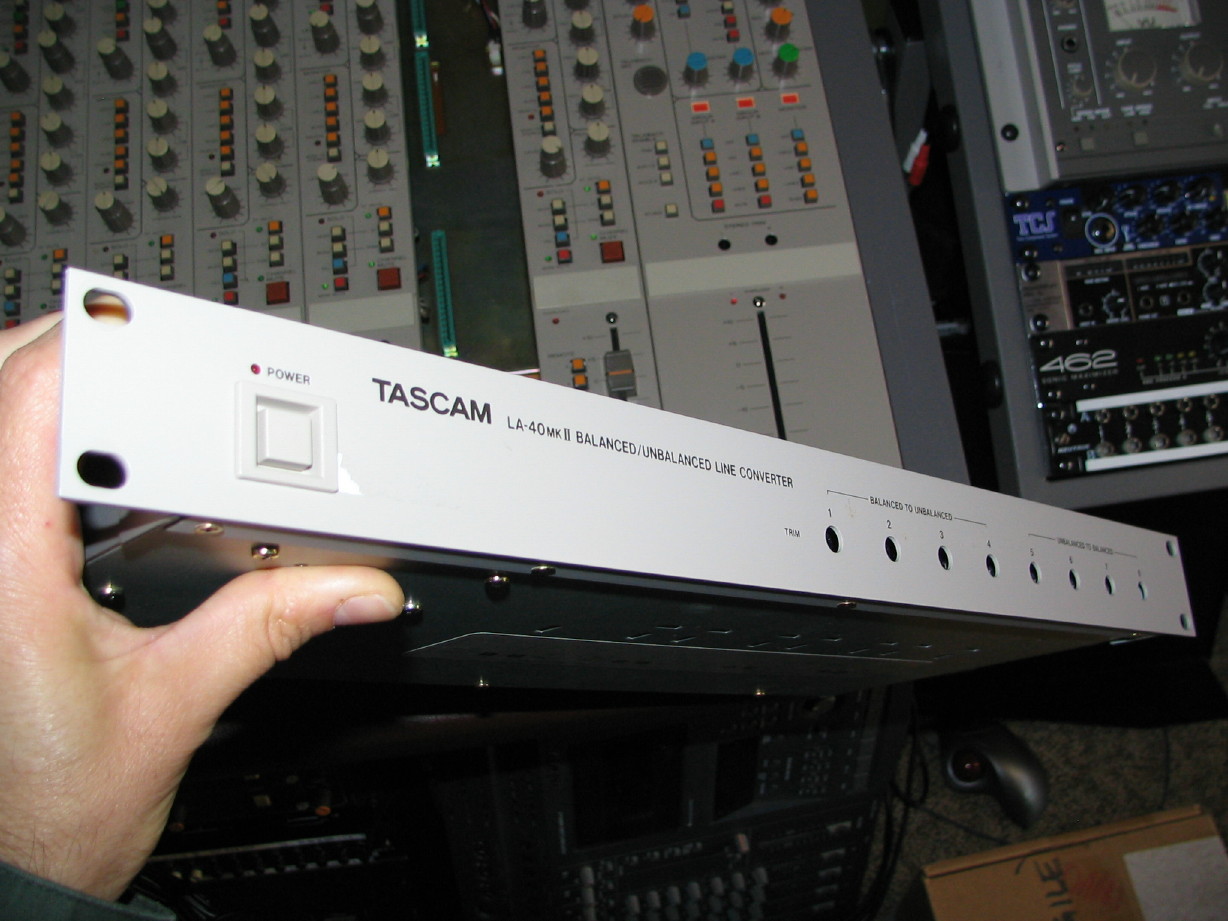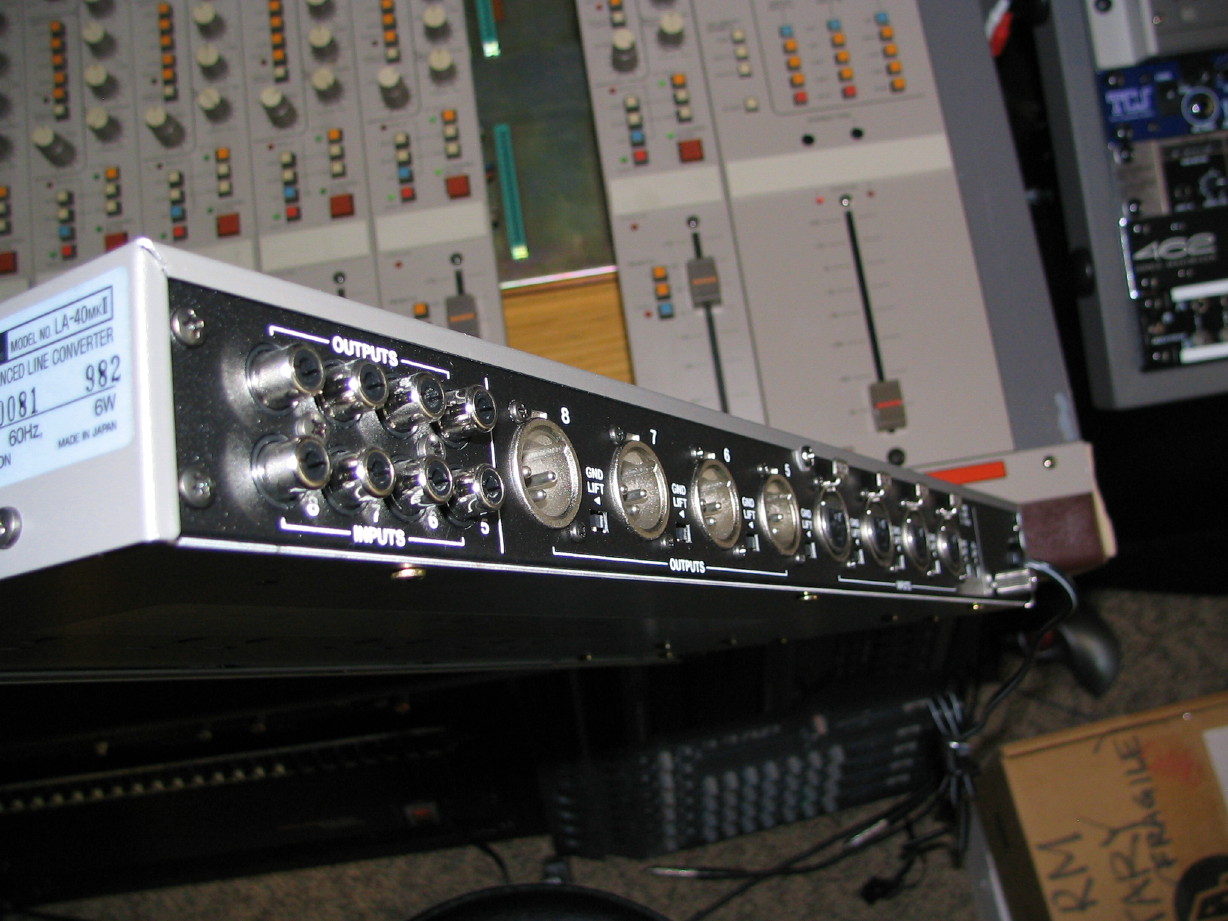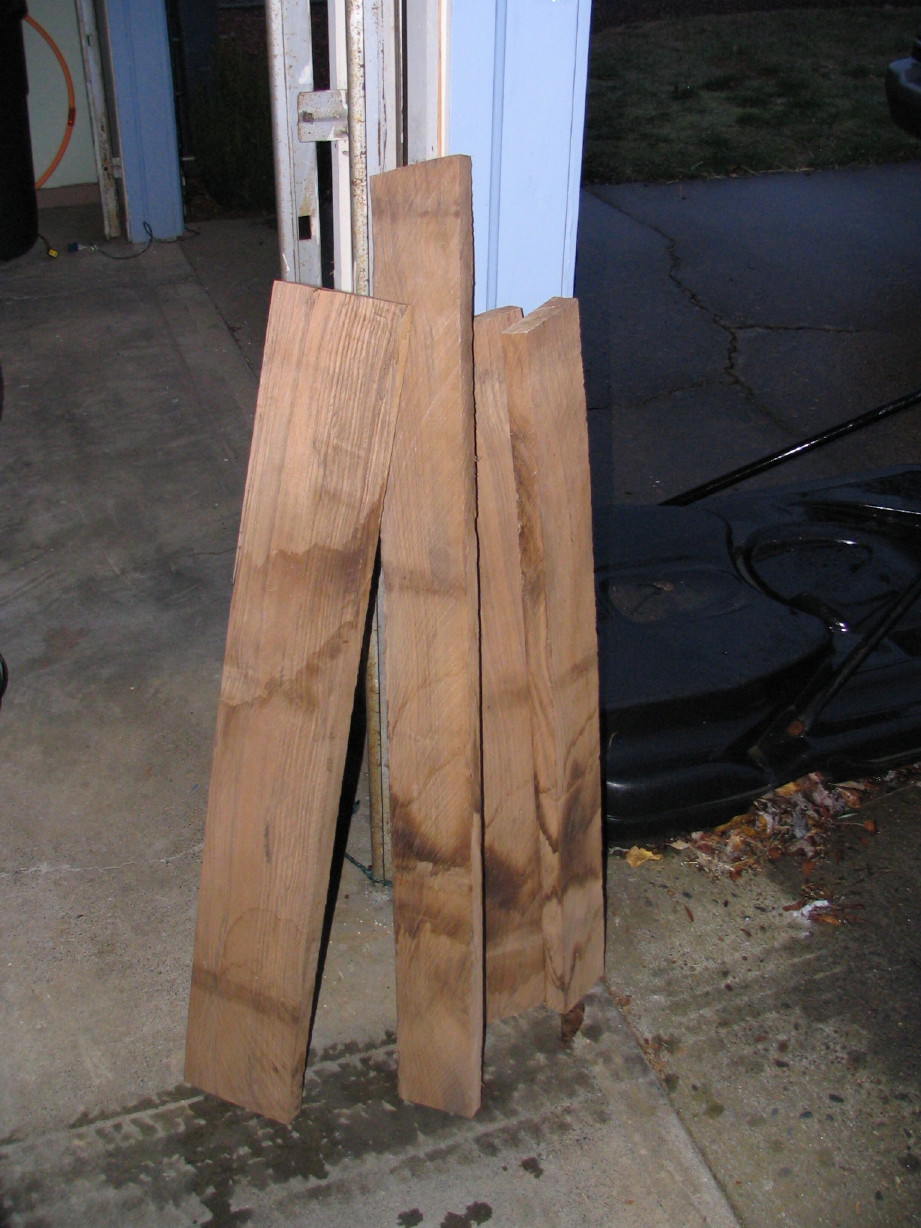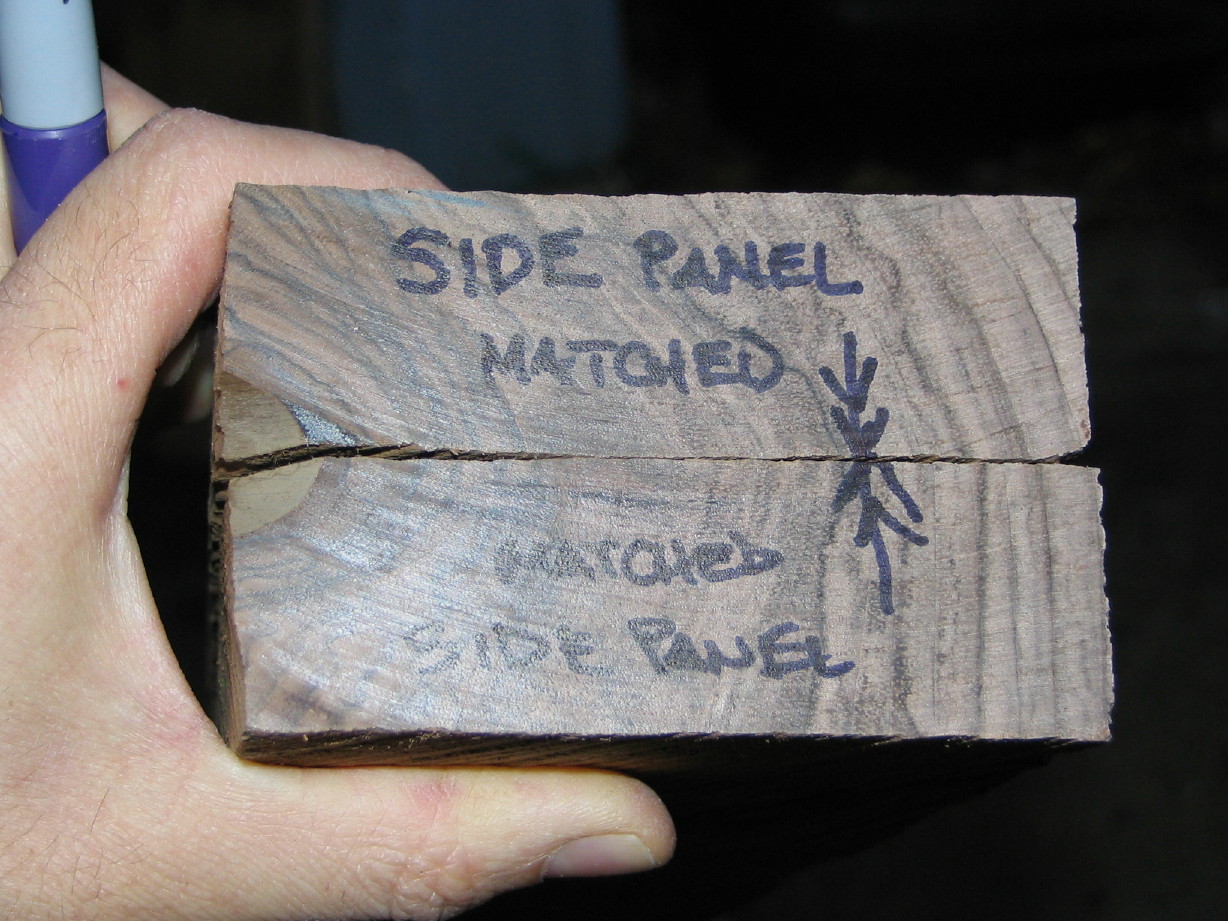Still working on channel strip #2.
Also found an addon balance converter module for the M-__...okay I'm kind of stretching it...I got an LA-40 mkII but I got it for pretty cheap and it is minty...just needs some cleaning up:


I'm looking for a second one now and with that I'll have 10 the capability for 10additional balanced +4 outs (aside from the STEREO outs) and be able to bring 8 balanced +4 returns to the board. This is important because my plan is to interface the M-__ with my Ampex MM-1000 8-track and a pair of LA-40's would allow me to utilize the balanced I/O of the MM. In that case the pair of LA-40's would be connected to the BUSS OUTs (the outputs of the 8 program groups), and to the LINE2 inputs of channels 1 ~ 8 (LINE2 is intended to be used as tape returns since LINE2 can be directly sourced in each pair of AUX sends 1 ~ 2 and 3 ~ 4 for cue feeds). The MM will accomodate unbalanced +4 or +8 inputs and outputs, but it is also fitted with transformer balanced I/O and I may like the sound of that path -OR- (because it is such a noisy beast) I may eventually need to place it in a different room or further from the board than is prudent for unbalanced cabling...I am a home recordist after all and often track in the same room as the mixing and recording equipment while operating said equipment so keeping the recorder and mixer close together in a different room while I track in another won't typically work.
Beware: long drawn-out tech-geeky kind of stream-of-consciousness below...I have a feeling this may well extend beyond most people's attention span...just giving you the opportunity to get out now.
The LA-40 is a neat and simple device and I expect it will do what it does transparently which is what I want, and will enhance the functionality of the M-__. Not that I'd ever use it for a live board but I think about those kinds of things for fun and as a mental exercise to get to know the board even better; how would it be interfaced and operated in different environments and such. This led me to some pondering about how
would it do as a live board...IS it well-endowed as a live mixer as much as it is a recording mixer? Some of this pondering was spurred by a recent discussion in another thread comparing some of the features of the Tascam M-500 and M-300 mixers and a major conclusion was that the M-300 mixers, though "only" a 4-buss family of mixers, are much better suited for live work because those subgroups can be routed to the main buss with the push of a switch (plus there is a dedicated mono mix control). Can the M-__ do those two things (recording and live work) equally well and simultaneously as a dual-purpose board? The short answer is yes, though it is definitely designed with recording in mind and I think the main thing I see at this point that sticks out in that regard is that it doesn't have a direct and basic/simple path to route the program groups (the 8 subgroups) to the main mix. Typically in a live mixing situation, at least in my experience, the subgroups are there as a convenience tool for the operator...individual channels can be routed to the groups in families of like sources thus reducing the number of faders the operator has to operate for coarse work...then each subgroup would have a switch to dump that group to the main buss. This is different than in a recording situation where the subgroups are used more like a variable patchbay for your recorder tracks. Of course you still would often be
grouping individual channels to groups in families of like sources like for instance submixing multiple drum mics down to three tracks and such, but the point is that in that recording situation your routing to subgroups is sort of a means to that end...mixing however many mixer channels down to that many subgroups for the recorder, and then of course you monitor those in stereo, but the focus at the recording stage is the level and content of those groups for those recorder tracks as opposed to a convenience tool as a means an end, the stereo or mono main mix. The M-__ subgroups do not have a direct way to be routed to the main mix. You can SOLO what is
available to route to the groups on that channel (the PGM SOLO), you can SOLO what is present on the group out present on that channel module (BUSS SOLO), and you can monitor what is present at the BUSS OUT jack via the MONItor section on that BUSS OUT jack's channel module because the MONItor section can be sourced to "BUSS", but there isn't a "STEREO" or "L-R" routing control after the BUSS MASTER level control. So how is it done? A bit kludgily...
The source selected at each channel's input select switch is automatically routed to the main mix. Rather than most routing sections on contemporary mixers where you would route a channel to "L-R" or some such thing, the M-__ channel's automatically go to the main mix but there is a ST MUTE switch, which in effect works just the opposite of the typical "L-R" routing switch in that you would switch the MUTE function in it to turn off the main mix routing, and turn the MUTE off (switch in the up position) to route to the main mix. So I could MUTE the routing path to the main mix which is after the path to the subroups so even with a channel muted to the main mix I can still route it to the 8 subgroups. So far so good. Now to get the group sums to the main mix I'd have to source each channel's MONItor section to "BUSS", and then use the MONI TO STEREO function which would dump the signals present after each channel's BUSS MASTER pot directly to the main mix. This would leave the monitor mixer unavailable for use in monitoring other things, but if the board was being used as a live board and the groups were to be used as a convenience tool for submixing then I'd probably want to be monitoring them with the monitor mixer anyway. And in spite of that bit of kludge I'd still have rapid group source switching via the GROUP A and B REMOTE section as well as the REMOTE switching for the monitor mixer. AND, I don't loose out on a mute control for the subgroups because there is a mute control for each subgroup that stops whatever is routed to that group, and there is also a mute for each channel's monitor section, AND there is always the big orange master mute kill switch. Another fun fact to consider is the ease of dedicating the EQ section on each strip for the subgroup that lives on that strip...if the eq is not needed for the input source and I'd rather or I
need the EQ section for the subgroup then it is the simple push of the EQ TO MONI switch and now the EQ section effects the monitor section in the channel which would make it an EQ for the subgroup if the group was being routed to the main mix via the monitor section --> MONI TO STEREO function. And how handy to have the two "rumble filters" (50Hz and 150Hz) as well as the low-pass filter that are active even if the EQ section is bypassed...nice feature for live work...often times in small venue situations (and depending on the event type) one microphone could be being used throughout the production for multiple sources. I find it hand in theese situations to be able to setup an EQ curve for one of those sources that needs it the most and be able to bypass the EQ for the other sources. Just drop it in when needed, but what a shame it would be if the two HPF's and the LPF were only active when the EQ was active...the M-__ was setup right IMHO because you can strategically switch the EQ in and out without effecting your use of the other filters.
If I wanted to use the subs in that way but still wanted the board to be used for multitrack mixing while being used as a FOH mixer then I could use the direct outs, which don't get killed by
anything...so the channel faders could still be used to control that and I'd montor off the recorder via the LINE1 or LINE2 inputs on the board (can use the REMOTE section for quick monitoring of that without disrupting the main mix) or even use the pre-fade/pre-eq jacks on each channel to send to the recorder and still have the channel faders available for detail mixing and the BUSS MASTER knobs for convenience submixing. We haven't even talked about the AUX sends yet...and if I had a couple LA-40's then all AUX sends could be on +4 balanced sends for monitor mixes to the stage, and I could even use the STUDIO outs in a pinch as a limited and mirrored pair of monitor sends since there is some independence of source selection there and a dedicated level knob. OROROR! The STUDIO outs could go to a delay processor and
then to the LA-40 and
THEN to an amp rack for balcony speakers...

SWEET!
So, though it'd have to be operated a little non-traditionally by contemprorary standards, the M-__ would still function well even in a live dual-purpose application...the number of channel strips would be its biggest limiting factor...that and arguably the number of AUX sends too. So it'd be limited to a small hall, BUT, it could do it
especially with those LA-40 converters. Too bad there's no M-__-EX (ala M-5EX or M-35EX...) You'd have to look back early in thread but I imagine the R&D folks at Teac were planning for that possibility in the design concept as there are terminals on the motherboards to connect each buss (subgroup, AUX, monitor, main, etc.) to
something, and a blanking panel on the back that looks like a good size for a hefty cascade connector...alas, an 8 or 12 channel M-__ expander 'tis not to be...Ive also mentioned before that there is evidence of capability for balanced I/O as seen on the vast number of unoccupied pads on the output PCB's as well as space for additional XLR jacks on the jack panel...

...but the LA-40 is going to be a nice companion.



 SWEET!
SWEET!
 ... nah just kidding, remember portability was a prerequisite, oh yeah and Tascam having made more then one so I could actually get one.
... nah just kidding, remember portability was a prerequisite, oh yeah and Tascam having made more then one so I could actually get one. I'll find another one or something else suitable, just gotta keep my eyes open.
I'll find another one or something else suitable, just gotta keep my eyes open.
 I agree that (based on what I think you are inferring) any Teac or Tascam enthusiast would enjoy it. It made me feel more proud to be an owner of Tascam gear. It is a unique company and Randy Alberts did a great job amassing the info that backs that up.
I agree that (based on what I think you are inferring) any Teac or Tascam enthusiast would enjoy it. It made me feel more proud to be an owner of Tascam gear. It is a unique company and Randy Alberts did a great job amassing the info that backs that up.
